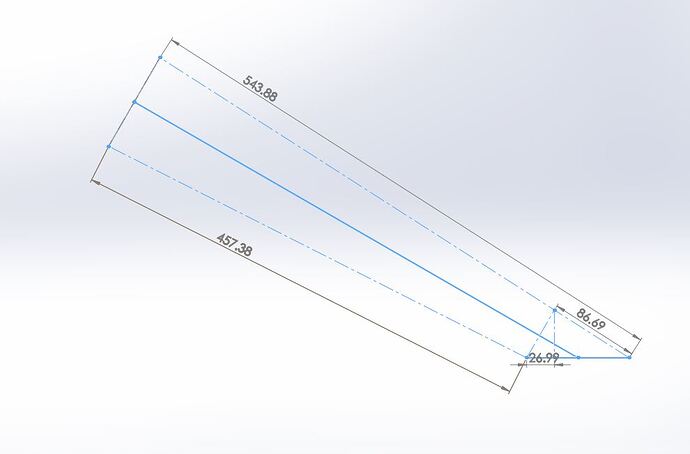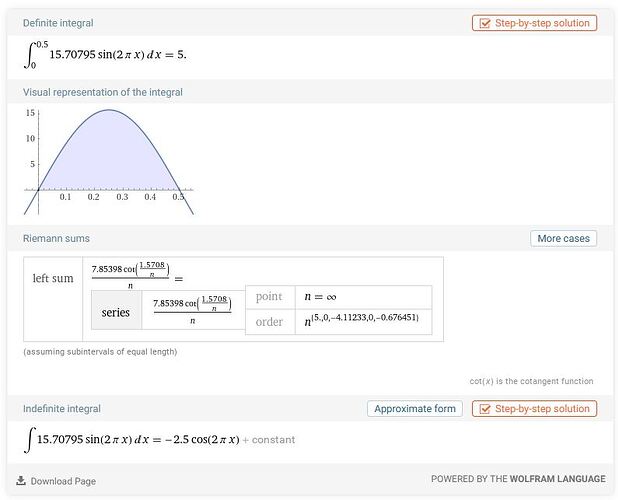Regarding this idea:
Or just “lines.”
My cam idea above adds another idea perhaps that doesn’t need a change in wing attitude. You can make it so that the cam reels in the tether slightly at the top of the loop, and lets it out slightly at the bottom of the loop. If then the wing has some roll angle, if the assumed slight differences in experienced wind speeds between the top and bottom of the loop then also result in the kite flying slightly faster at the top of the loop than at the bottom, enough to overcome the weight of the system and then some, the shaft should be steered up.
This quote now is incomplete/wrong I think (and also I should have said “while ascending/descending” where I said “at the top/bottom of the loop”), see the triangle below.
First a horizontal carousel idea:
In a shaft with 5 meter arms and a 30 degree elevation angle, you’d have reel the tether in and out 8.7 meter every revolution, if you want the plane of rotation to be perpendicular to the elevation angle.
If you want to do torque transfer, the shaft now looks like an ellipse close to the ground, with the minor axis in this example being roughly half that of the major axis.
Looking at the sketch, the 26.99 is interesting for a different reason. Here is a different sketch:

This shows that in a concept like the Pyramid if you have a 30 degree elevation angle and 5 meter long arms, and the plane of rotation is perpendicular to the elevation angle, and the kites also fly in a 10 meter radius, your kites move 5 meter downwind and 5 meter upwind during every rotation.
I think that means while the kite is descending, you subtract 5 meters from the wind, and while it is ascending, you add 5 meters to the wind. I am guessing the experienced wind speed would be a sine wave and the 5 meters added or subtracted would be the area under the curve. The height above the x-axis of the wave would be the actual wind speed seen by the kites.
My calculus is rusty. Wolfram Alpha says:
In this example the amplitude of the wave is 15.7 m/s, so the kites would see a variation of 2 times 15.7m/s in wind speed throughout one rotation.
Is my thinking right?
You could make the arms rotate about a horizontal shaft to eliminate the effect the arms have on this, changing the tensile shaft shape from a rectangle to a parallelogram, to leave only the effect the elevation angle has on it if the kites fly in a larger radius than the arms. Or you could tilt the arms in different directions to help with gravity slowdown and perhaps also steering, instead of or in addition to the cam idea. Tilting the arms probably affects lots of things, like torque transfer ability of the shaft and adding cyclic loading to the arms.

